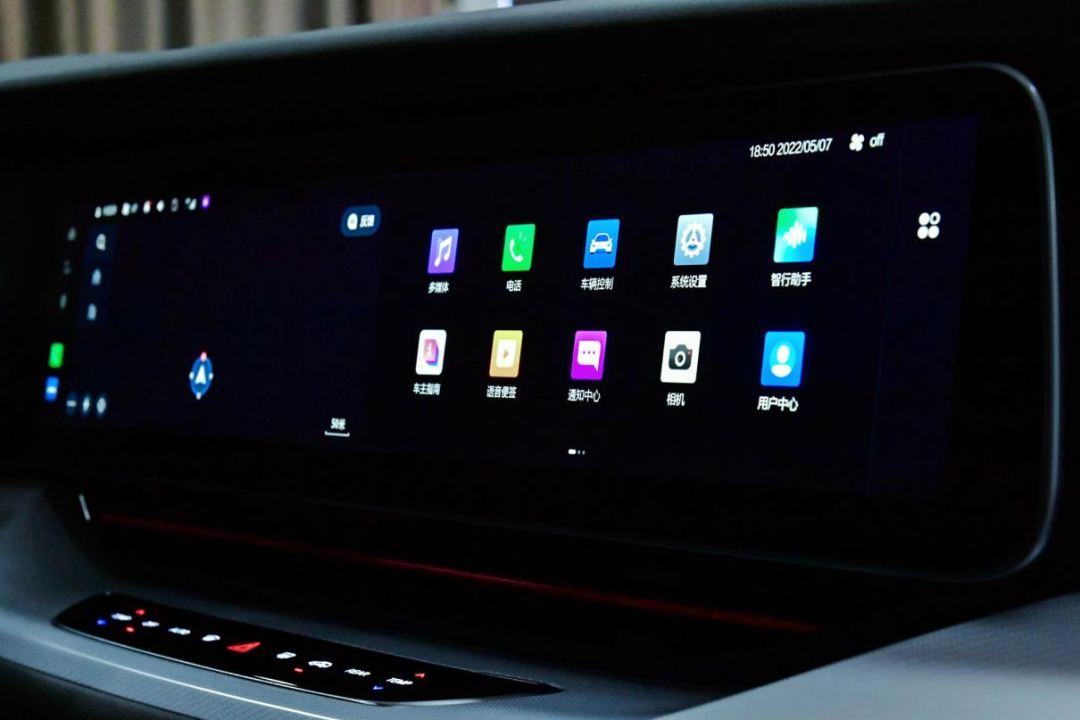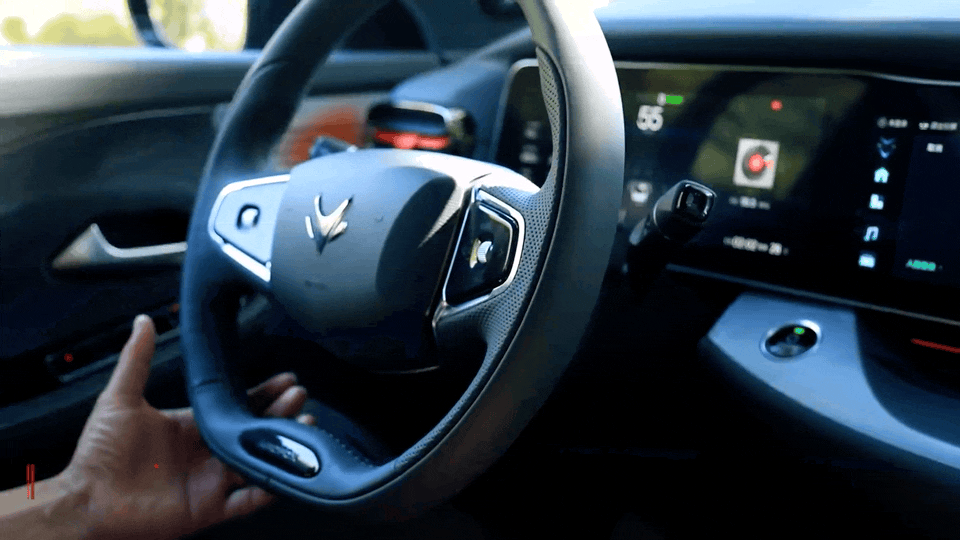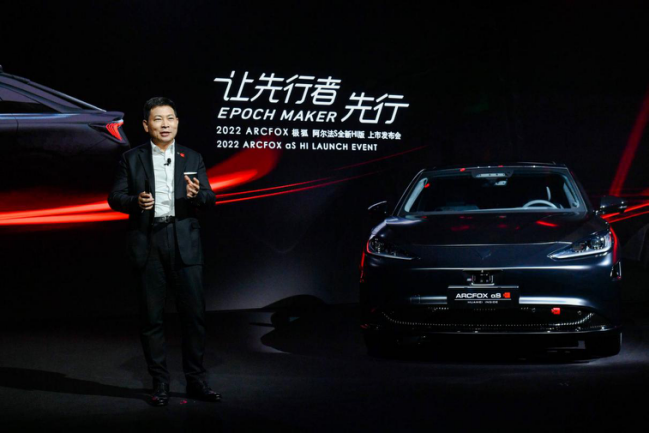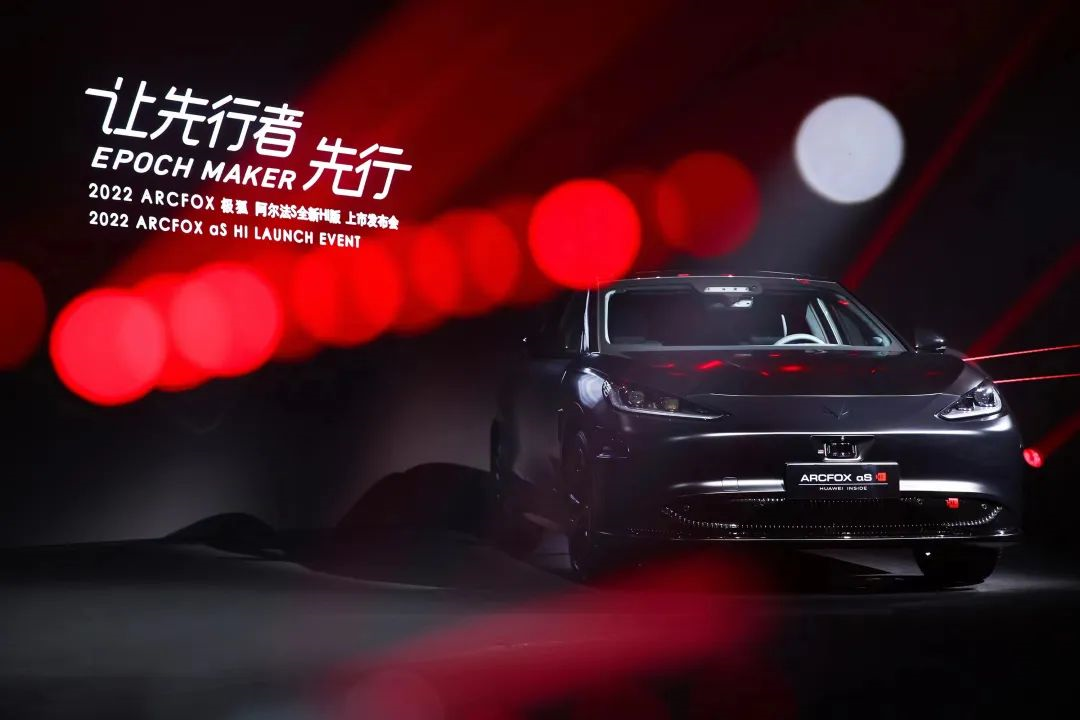Automotive Translation Example
The Howling Fox
Around this time last year, a video of Huawei’s autonomous driving suddenly went viral. In a complex urban setting, the vehicle could navigate without human intervention, and even proactively make safe driving decisions, such as changing lanes. The debut of “Huawei’s car-making” was quite impressive.
Only a little later than everyone expected, the original protagonist of the video – the Arctic Fox Alpha S – finally hit the market last Saturday, a year after its pre-sale. For RMB 397,900, you can have the world’s first mass-produced Huawei full-stack intelligent solution vehicle that provides city-level advanced driving assistance.
World’s Strongest without a Rival
As we all know, Huawei, a company that does not manufacture cars, has partnered with companies such as SERES/Weltmeister, BAIC Motor’s Arcfox, and Avita. Among them, the fledgling Weltmeister is often considered Huawei’s “child.” However, the Arctic Fox Alpha S, which boasts the “HI (Huawei Inside)” title, is the first mass-produced car to be built according to the HI model. From the very beginning, the two sides cooperated in defining and developing this model with Huawei’s full-stack intelligent system integrated.
In contrast, the previous Weltmeister M5 only had a HarmonyOS smart cockpit and did not possess the advanced driving assistance capabilities of the new Alpha S HI version. Another well-known HI model is Avita, which is a collaboration between Changan Automobile, Ningde Times, and Huawei. However, the Arctic Fox Alpha S HI version hit the mass production market first.

The software and hardware configurations and capabilities of the new Alpha S HI version were already extensively displayed last year, and Huawei and Arctic Fox have spent the past year perfecting the testing version into a production vehicle that can be safely delivered to consumers today.
Yu Chengdong confidently described the new version as “the globally strongest in hardware architecture,” and emphasized that “there is no rival.”
Despite the proliferation of Lidar and high computing platforms in the past year, when it comes to mass production, it’s difficult to find a combination that can match the power of the Arctic Fox + Huawei. The Alpha S HI version has 34 sensors, consisting of three 96-beam lidars, six millimeter-wave radars, 12 ultrasonic radars, and 13 cameras fitted with Huawei’s MDC810 intelligent computing platform. Even newer and more naive combinations are now on the market, but it doesn’t intimidate the Alpha S HI version.
 The achievement is the first fully-scenario advanced intelligent driving system that “can enter the city”, unlike systems that only allow you to relax on highways. The all-new HI version of Alpha S can achieve a series of “out-of-scope” applications under complex city environments, such as unprotected left turns at intersections, close-range cutting-in recognition and handling, and motor vehicle lane avoidance of non-motor vehicles, without human intervention.
The achievement is the first fully-scenario advanced intelligent driving system that “can enter the city”, unlike systems that only allow you to relax on highways. The all-new HI version of Alpha S can achieve a series of “out-of-scope” applications under complex city environments, such as unprotected left turns at intersections, close-range cutting-in recognition and handling, and motor vehicle lane avoidance of non-motor vehicles, without human intervention.
In addition to its intelligence, the all-new HI version of Alpha S also has a dual-motor from Huawei, with an acceleration time of 0-100km/h in just 3.5 seconds. To fully utilize its high-performance advantages, Jixian has also added a choice of track mode and rampage mode. Based on the 800V high-voltage platform, the entire vehicle can support a fast charging power of up to 187kW, taking only 15 minutes to charge from 30% to 80%.
Huawei, which “does not manufacture cars”, must balance against Wanjie, Jixian, and Chang’an. Wanjie, which is still connected to SLiS, has obtained a full set of HarmonyOS intelligent cabins, while Chang’an’s Avita is still waiting for its time. Jixian has the opportunity since it has obtained the first landing qualification of Huawei Inside.
It is precisely because of this HI qualification that Jixian has become the first to be put into mass production in China’s various advanced intelligent driving systems based on multi-laser radar.
In the past two years, LiDAR has increasingly appeared in the configuration tables of mass-produced cars, and this trend soon became “rolled” into a quantity competition. From last year to this year, we have seen the WmAuto M7, IM L7 (reserved for upgrade), GAC Aion LX, and the King of Kings Salon, Mecha Dragon, which covers 360° with 4 laser radars.
The LiDAR budget of car companies seems to be like water in a sponge, as long as it is willing to squeeze, there will always be a few drops left. However, squeezing hardware costs is simple; software experience is difficult to return value for the price. Most of these multi-laser radar models, some of which are not yet in mass production, or have not been fully used, are still facing the classic question of “what is the point of installing so many?”
Huawei did not recklessly wave its eight radar probes at previous auto shows, but a year ago, Jixian and Huawei’s test cars had already demonstrated their true ability outside the stage. Although this system highly relies on high-precision maps, Huawei has stated at the release conference of the all-new HI version of Alpha S that it will gradually reduce its dependence on high-precision maps and ultimately achieve indiscriminate acceptance.## Introduction
Yu Chengdong has repeatedly revealed that “our strength is actually enough, but regulations do not allow for the complete liberation of drivers”. Although this may not be entirely true, it can be seen that Huawei is confident in this advanced intelligent driving system. After all, as early as a year ago, the test vehicle was able to achieve difficult maneuvers such as avoiding non-motorized vehicles and borrowing lanes for over 1000 kilometers without intervention, and this was demonstrated in the complex urban environment of Shanghai. This system has also been polished for a whole year since then.
The selling price of nearly 400,000 yuan may seem high, exceeding the standard Alpha S by over 30%. However, first of all, the HI version is the top performance version with all configurations maxed out, and secondly, the HI version’s advanced urban auxiliary driving technology is currently unique in the market. For consumers who value advanced driving assistance technology or are eager to experience the latest travel technology, this is currently the only option available.

For the first HI model launched by Jihoo, there is high confidence and expectations, even to the point of excitement, claiming to “sell to the point of being out of stock, with no inventory left.” Regarding intelligent vehicles, Jihoo has already achieved sufficient strength in the “vehicle” aspect through deep cooperation with Magna and a new high-specification platform. However, this is still not enough. When the mechanical foundation has caught up with the advanced front, Jihoo found that it still lacked the “smart” experience aspect.
For the automobile industry, Huawei was the driving force behind the brand’s birth; for Avita, Huawei is one of the three joint venture partners; for Jihoo, Huawei’s role and position are very clear and explicit: to use the most advanced intelligent system as the appealing selling point in the new era, and support the technological tone and brand height of the entire Jihoo brand.
Once upon a time, the words Beiqi always reminded people of online car booking and sharing rides. Now, Jihoo will use its advanced intelligence to “enter the city” and sweep into the waist and abdomen areas of small and medium-sized cities.
This article is a translation by ChatGPT of a Chinese report from 42HOW. If you have any questions about it, please email bd@42how.com.
